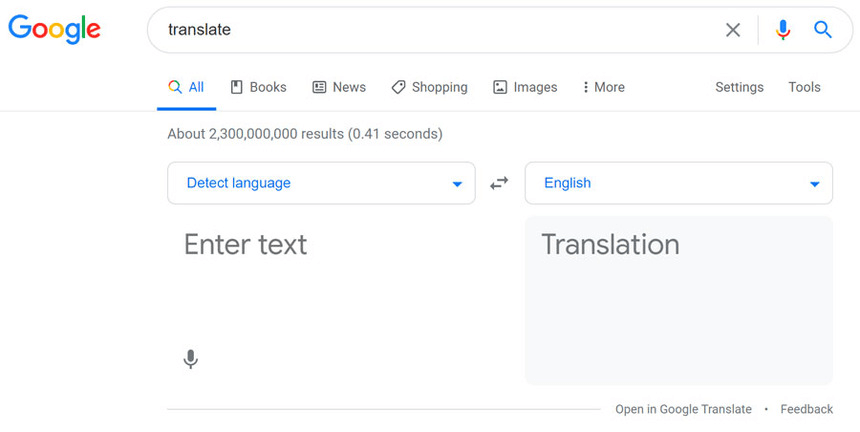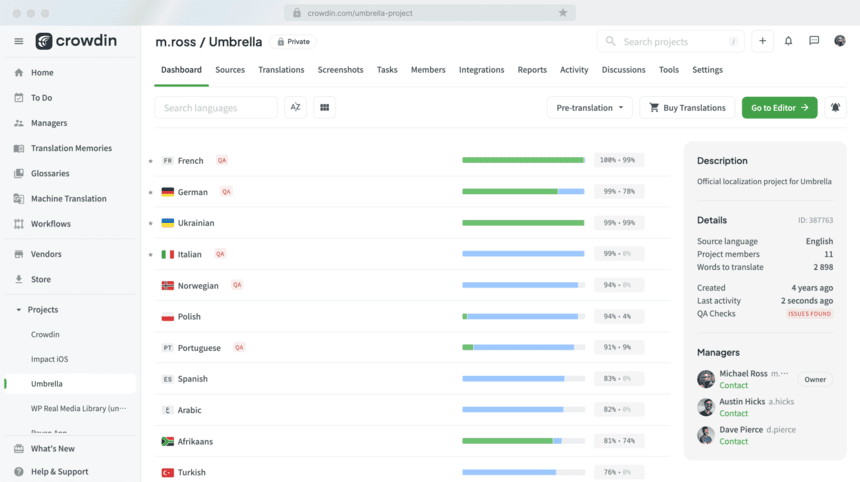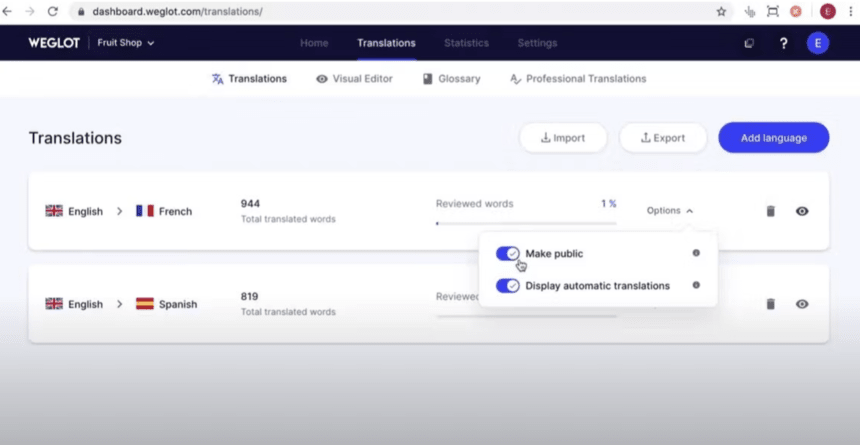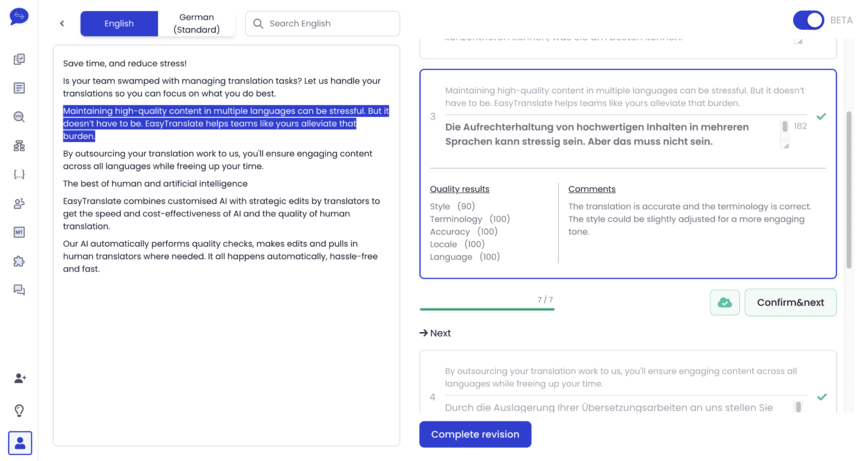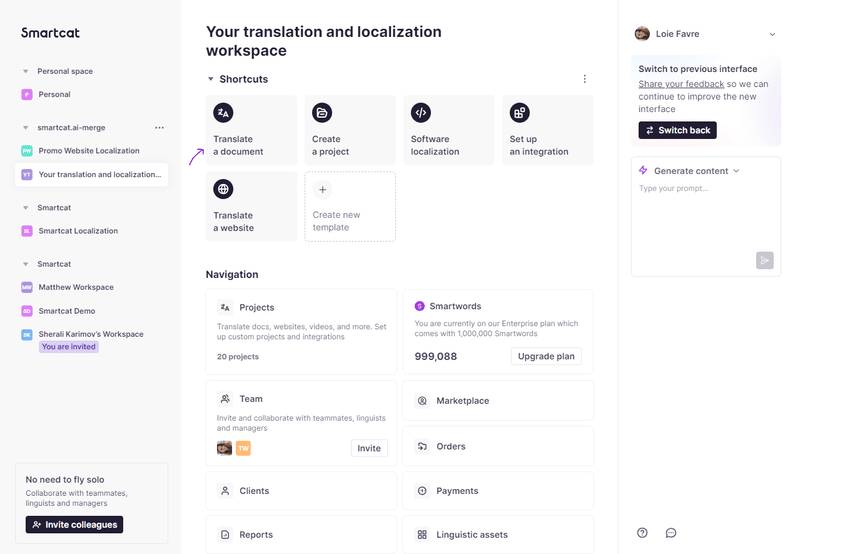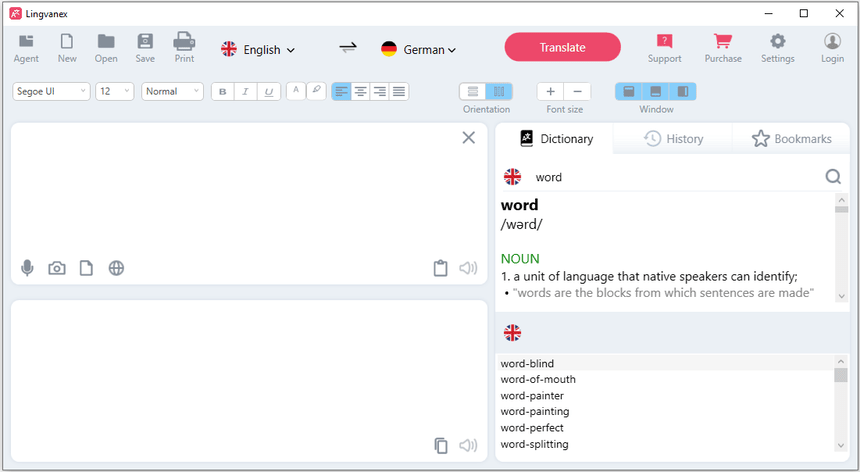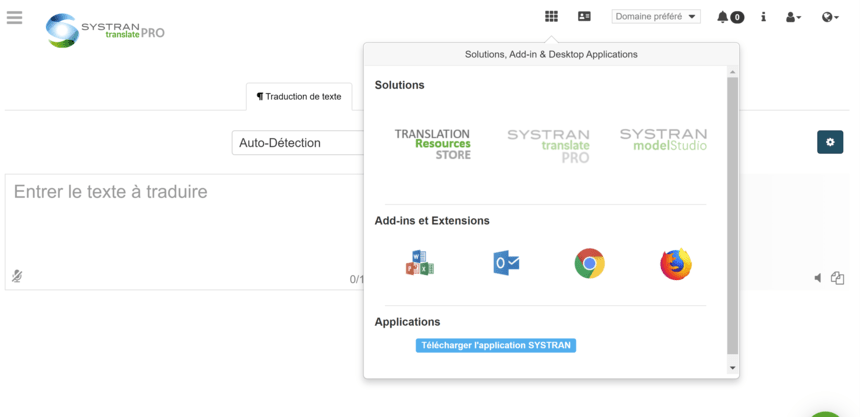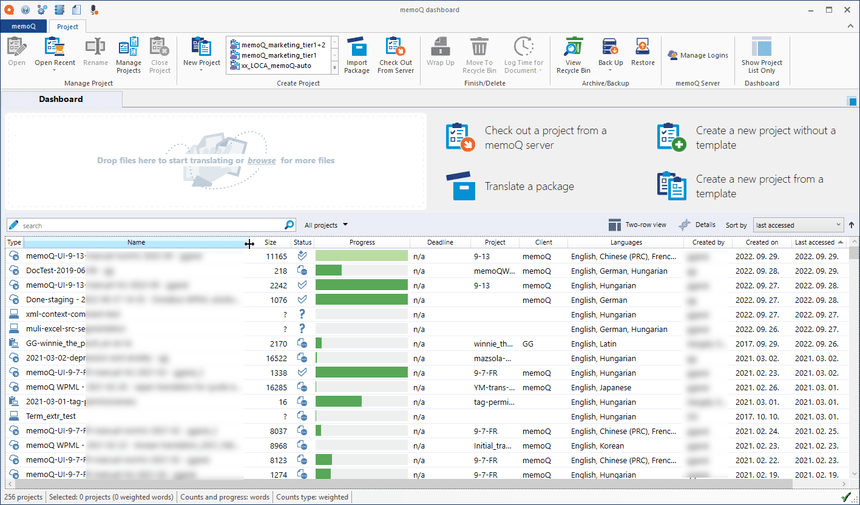Embarking on a journey through the dynamic landscape of language and communication, businesses and linguists are seeking tools that transcend traditional boundaries. Following extensive research, we have identified the top 11 translation software and apps of 2025, offering alternatives to conventional methods of human translation. This curated selection is designed to enrich your multilingual experiences and bridge language gaps with ease. Allow these state-of-the-art tools to transform your texts and conversations, turning global communication into an art form.
What Is Online Translation Software and How Does It Work?
Online translation software is a digital tool designed to bridge language barriers, transforming text and speech across different languages into understandable content. It’s about enabling effective communication globally, connecting people, and turning multilingual challenges into opportunities for wider understanding.
These applications typically feature functionalities like real-time text translation, speech recognition, automatic translation, and language detection. They incorporate advanced technologies such as AI and machine learning to ensure contextual and culturally relevant translations. This makes them an indispensable resource for global businesses, travelers, and anyone needing to navigate a multilingual world. They serve as a vital tool for breaking down language barriers, fostering international collaboration, and ensuring that ideas and conversations are accurately conveyed and understood across different cultures through their translation services.
11 Best Translation Software Tools for 2025
Google Translate
Google Translate is a multilingual neural machine translation service developed by Google, designed to translate text, websites, and even spoken language from one language to another. It supports a wide array of languages, for instance, translating English to French, offering users the ability to translate between combinations of languages seamlessly. Utilizing advanced machine learning techniques, including deep learning and artificial neural networks, Google Translate has significantly improved over time in terms of accuracy and fluency, making it a powerful tool for global communication.
The service is accessible through various platforms, including a web interface, mobile apps for iOS and Android, and an API that developers can integrate into their own applications. This accessibility has made Google Translate a go-to solution for instant translation needs, aiding travelers, professionals, and language learners worldwide. Despite its advancements, the service is not without its limitations, occasionally struggling with complex sentences or idiomatic expressions, highlighting the challenges still present in automated translation technology.
Key Features:
- Supports over 100 languages globally
- Real-time speech translation capabilities
- Text-to-speech functionality for languages
- Website translation for global access
- Integration API for developers’ use
Crowdin
Crowdin is an AI-powered localization platform designed for teams and businesses seeking a multilingual approach. It integrates with over 600 apps, streamlining the translation process for software, mobile apps, websites, marketing materials, and games. The platform is celebrated globally for automating and simplifying content translation, making continuous localization possible alongside development.
Crowdin Enterprise expands these capabilities for larger organizations, offering advanced management of multilingual content and translations. It emphasizes security with ISO/IEC 27001 certification and GDPR compliance, alongside robust features like AI-assisted translations, customizable workflows, and 24/7 support. Crowdin Enterprise is tailored for businesses aiming for global reach with secure, efficient, and high-quality localized content.
Key Features:
- AI-powered
- 600+ apps and integrations
- Free plan opportunity
- Support over 100 file formats
- Marketplace of vendors and experts
Transifex
Transifex stands as a dynamic force in breaking down language barriers, offering AI-powered translation and localization services that promise to elevate businesses to a global stage. With a focus on delivering human-quality translations that maintain brand authenticity at remarkable speed and reduced costs, Transifex AI is tailored to provide context-based translations at scale. This allows companies to fully adapt their content to diverse linguistic needs, setting the stage for increased revenue and global engagement.
Serving as a centralized localization hub, Transifex streamlines the entire translation process by consolidating content from various sources onto a single platform. This integration enables effective team collaboration and workflow simplification, eradicating the chaos of lost emails and outdated spreadsheets. Designed for managing complex workflows, Transifex removes manual tasks, automates processes, and allows for rapid publication, leveraging trained algorithms for content translation. With the option to try it out via a 15-day free trial or a personalized demo, Transifex opens doors to global engagement and keeps users updated with the latest in localization through their monthly newsletter.
Key Features:
- All-in-one localization hub
- Human-quality AI translations tailored to your needs
- Context-based suggestions
- AI-driven workflows
- Dynamic content updates
Weglot
Weglot is a no-code website translation solution that allows you to launch a multilingual website instantly. It works by automatically detecting, translating, and displaying the content of your website under language subdomains or subdirectories, removing the pain of having to manage multiple websites for multiple markets. It also works with any CMS and technology.
It makes translation management easier through several features: multiple ways to edit and review translations, such as seeing translations listed per language or the Visual Editor; collaborative capabilities including the option to mark translations as pending, easily translate media, metadata, and content from outside of your website, and more. On top of that, Weglot ensures that each translated version of your website is optimised for multilingual SEO by instantly adding hreflang tags, ensuring search engines properly detect and index your translated content.
Key Features:
- Automatic detection, translation, and display of translated content on website
- Compatible with all technology (CMS, 3rd-party apps, plugins, etc)
- Optimized for Multilingual SEO
- Intuitive post-editing tools
- Excellent customer support (4.8/5 on G2, 4.9/5 on Google, Trustpilot, WordPress Plugin Directory)
EasyTranslate
Traditional human translations are costly and time-consuming. What you get when purchasing “human translation” is actually machine-generated translation with a translator typically editing 10% of the text. You still, however, pay full price as translators need to evaluate the entire machine-generated translation to know which parts need editing. This makes traditional translation expensive, time-consuming and complicated. On the other hand, generic AI alone often misses a brand’s true voice.
EasyTranslate blends the best of human and artificial intelligence for easy, affordable, quality translations. Customised AI does the heavy lifting of the translation work and strategically loops in humans where it matters most. As a result, you enjoy the same human quality or even better, for a reasonable cost. EasyTranslate delivers accurate, context-aligned, on-brand translations within your budget, providing superior quality without the hefty price tag.
Key Features:
- Combining AI and human intelligence for the best of both worlds
- Accurate, context-based and on-brand translations
- Great quality AND great price
- No more manual copy-pasting thanks to automated processes
- Receive translations in the right format and spots, directly in your CMS, PIM and other systems
Lokalise
Lokalise stands at the forefront of localization technology, trusted by world-leading brands to provide exceptional localized experiences. With its smart AI capabilities, Lokalise delivers context-aware translations rapidly, streamlining communication by allowing users to translate, rephrase, and more, without the drudgery of guesswork or time-consuming efforts. The platform empowers teams to collaborate effectively in a single workspace, where tasks can be assigned and progress tracked seamlessly, ensuring everyone is in sync throughout the localization process.
Beyond just translation, Lokalise is engineered to accelerate time to market by aligning localization with the development cycle, offering plugins for design tools like Adobe XD, Figma, and Sketch. Quality is paramount, with Lokalise providing tools such as translation memory, machine translation, and QA checks, alongside product screenshots for better context. Developers are freed from the burdens of localization through robust API, CLI, mobile SDKs, and integrations with a suite of development and project management tools, making Lokalise an indispensable asset for enhancing productivity and expanding market reach.
Key Features:
- AI-powered rapid context-aware translations
- Collaborative single workspace for teams
- Integrations with design and development tools
- Quality assurance with translation memory
- Simplified developer involvement, robust API/SDKs
Smartcat
Smartcat emerges as a transformative language AI platform designed for global enterprises, streamlining operations across borders with ease. By converting content of any format—from documents to intricate websites—into any language, Smartcat’s bespoke AI solutions cater to various corporate needs. This innovation simplifies complexities for corporate teams and empowers them to generate fresh content while tapping into an extensive multilingual library, ensuring consistency and scalability. Trusted by over a thousand global companies, including 20% of the Fortune 500, Smartcat stands as a communication bridge for businesses worldwide.
The efficiency of Smartcat is reflected in its impressive metrics, which showcase its impact and reliability in the industry. A significant 20% of the Fortune 500 companies utilize Smartcat for their multilingual content requirements, attesting to its effectiveness. Client feedback on G2 rates the platform at 9.5 out of 10 for its ease of setup and usability, further cementing its status as a user-friendly tool. Moreover, as a SOC II compliant organization and a recognized leader by G2 in the summer of 2023, Smartcat is not just a tool but a dependable partner for enterprises aiming to navigate the global market.
Key Features:
- Instant results with AI technology
- Consistent multilingual content quality
- Significant cost savings over outsourcing
- Scalable AI-driven workflow integration
- Recognized industry leader, SOC II compliant
Redokun
Redokun is a cutting-edge translation management platform that redefines efficiency in translating marketing assets. With its user-friendly interface, Redokun offers an incredibly simple translation tool that maintains your document’s original design while enabling content translation. It integrates seamlessly with powerful translation engines like DeepL and Google Translate and leverages previously approved translations to expedite the process, promising up to a threefold increase in translation speed.
Not just a tool for translation, Redokun is designed for enhancing team productivity and simplifying the translation workflow. It supports various file types including Adobe InDesign, Microsoft Office suite, and XLIFF files, ensuring a broad application across different document formats. The platform is so intuitive that teams can start translating online in minutes without prior experience in translation software. With Redokun, companies can expect fast, simple, and consistent translations that resonate with all their markets.
Key Features:
- Triple-speed translation management platform
- Design-preserving automatic translation tool
- Instant translation suggestions integration
- Supports major document formats
- Intuitive, quick-start user interface
Lingvanex
Lingvanex introduces a suite of AI-enhanced speech and translation tools tailored for businesses looking to bridge language barriers effectively. Their platform offers machine translation services across 109 languages, ensuring secure and accurate text and document translations at a fixed price. Additionally, Lingvanex’s speech recognition technology provides clear and punctuated transcripts in 91 languages, facilitating seamless international communication and documentation.
Central to Lingvanex’s offering is its emphasis on security and quality. The service offers flexible deployment options, including cloud, SDK, and on-premise solutions, allowing businesses to keep their data securely within their infrastructure. Leveraging the latest in artificial intelligence and scientific research, Lingvanex promises high-quality translations and ultimate performance. The platform is designed for easy integration across a wide range of operating systems and devices, ensuring businesses can quickly adapt and utilize these advanced language technologies to expand their global reach.
Key Features:
- Secure translation in 109 languages
- Speech recognition in 91 languages
- Customizable generative AI services
- Comprehensive cloud and SDK solutions
- Easy multi-platform integration
Systran
Systran offers state-of-the-art machine translation solutions that serve as a gateway to efficient and seamless multilingual communication. Catering to a wide range of needs, Systran supports translation across more than 50 languages and 30+ file formats, including Office documents, PDFs, XML, and IDML. With a simple drag-and-drop feature, users can easily translate various document types, while a browser extension allows for one-click webpage translations, ensuring that language barriers do not hinder web browsing experiences.
For businesses requiring high-caliber, rapid translation, Systran is a leader with a legacy dating back to 1968. Their commitment to data security is unwavering, offering highly secure solutions that respect data privacy, ensuring end-to-end encryption and compliance with GDPR. SYSTRAN’s Server is designed for enterprises demanding the utmost in performance and security, capable of translating thousands of words per second without compromising quality. With over 50 years of experience and an ISO certification, Systran continues to innovate in the field of machine translation, fostering global communication and collaboration.
Key Features:
- Translates over 50 languages efficiently
- Supports 30+ document file formats
- One-click web content translation
- Compliant with strict data security
- On-premise high-performance translation server
memoQ
memoQ is a comprehensive translation and localization management tool designed for freelance translators, language service providers, and multinational corporations. It offers a suite of advanced features for managing translation projects, including translation memory, terminology management, quality assurance checks, and collaborative workflows. This software facilitates the efficient handling of large volumes of text and helps maintain consistency across translations, significantly improving productivity and accuracy.
The platform is renowned for its user-friendly interface and flexibility, allowing customization to fit various project needs and integration with third-party applications. memoQ supports a wide range of file formats, making it versatile for different types of content, from documents to software and multimedia. Its ability to streamline the translation process, combined with robust project management tools, makes memoQ a preferred choice for professionals aiming to optimize their translation workflows.
Key Features:
- Advanced translation memory technology
- Comprehensive terminology management system
- Integrated quality assurance tools
- Collaborative workflows for teams
- Support for multiple file formats
How Did We Select the Best Translation Software Alternatives?
Diverse Language Support:
The world of translation is vast, with a multitude of languages and dialects. We focused on software that offers extensive language support, enabling users to communicate and translate text across a wide array of languages effectively.
Ease of Use and Accuracy:
Translation efficiency is key. We assessed translator software both for its user-friendliness and the accuracy of its automated translations themselves, prioritizing tools that streamline the translation process while maintaining high levels of precision and contextual relevance.
Professional Feedback:
The quality assurance credibility of translation software is often reflected in its adoption by professionals. We analyzed feedback from linguists and translators, looking for software that consistently meets the rigorous demands of professional translation.
Cost-Effectiveness for Professional Use:
Professionals and businesses require reliable, high-quality translation tools, often within budget constraints. Our selection emphasizes software that provides excellent translation capabilities and high-quality translations at a cost-effective price point, catering to various professional needs and budgets.
Choosing the Best Translation Software for Professional Use in 2025:
Assess Your Translation Needs:
Evaluate the nature of your translation tasks and translation projects. Are they for business communications, legal documents, multilingual content creation, or translation management, or customer support? Identifying your specific requirements will guide you toward software equipped with features that cater to your particular translation needs.
Understand Your Target Languages:
Knowing the languages you’ll frequently translate into and from is crucial. Some tools specialize in certain target language pairs or offer more accuracy in popular languages. Choose a software that excels in the languages relevant to your professional context.
Gather Professional Insights:
Consult with fellow professionals, linguists human translators, or translation industry experts about their preferred translation software. Their experiences can shed light on the software’s reliability, accuracy, and usability in real-world scenarios.
Test with Free Trials or Demos:
Many translation software providers offer trial periods or demos. Utilize these to test the software’s functionality, user interface, and accuracy. This hands-on experience is invaluable in making an informed decision.
Check for Integration Capabilities:
Consider if the software integrates well with your existing workflow and content management system and tools. Seamless integration with other professional tools can significantly enhance efficiency and ease of use.
Evaluate Pricing and Value:
Understand the pricing structure of each software, whether it’s a one-time purchase or a subscription model. Assess the cost against the features and benefits offered, ensuring the software is cost-effective for your professional needs and offers good value for your investment.
Cost Considerations for Top Professional Translation Software Tools in 2025
Navigating the realm of professional translation, businesses and individuals often face the challenge of balancing cost with functionality. In 2025, top translation software tools in the US and EU are typically priced between $15 to $60 per month for individual licenses, a reflection of their sophisticated features and high accuracy levels. More affordable options do exist, often sourced internationally, which may offer basic translation capabilities at a reduced cost. These economical alternatives, while budget-friendly, may not always match the advanced features of premium software. Professionals must carefully weigh their financial constraints against their translation needs and the software’s capabilities to make an informed decision.
Identifying the Optimal Time to Switch to Advanced Translation Software for Professionals in 2025
For professionals and businesses, determining the ideal moment to switch to a new translation software is crucial. The right time typically emerges when current tools no longer meet evolving translation needs, whether due to limited language options, inadequate accuracy, or lack of advanced features. However, recognizing the need for change is just the beginning; it’s equally important to consider the timing of the transition to avoid disrupting ongoing projects.
Many professionals choose to make the change during periods of reduced workload or at the start of a new translation project. These quieter times provide an opportunity to familiarize themselves with the new software’s capabilities, including language support, accuracy levels, and additional features. The transition is best made when there’s a clear need for improved translation quality or functionality and when there’s sufficient time to integrate and adapt to the new tool. Switching to more advanced machine translation tools and software at the right time can significantly enhance the efficiency and effectiveness of professional communications and global interactions.
Choosing Between Professional Translation Software and Custom Development
Businesses and translation professionals today face a pivotal decision: subscribe to a leading translation software or develop an in-house translation tool. Subscription costs for top-notch translation software, ranging between $15 to $60 per month, offer access to a suite of advanced features like AI-powered translation accuracy and extensive language support, honed by experts over the years.
In contrast, creating a bespoke in-house translation tool involves significant investment in skilled developers, linguists, and technology, often surpassing the cost of subscription services. Additionally, the development process may not guarantee the same level of sophistication and language coverage as established software.
Moreover, professional translation software benefits from continuous improvements based on feedback from a diverse, global user base, ensuring the inclusion of the latest linguistic nuances and translation technologies. An in-house solution may lack this wide-ranging input, potentially leading to a tool with limited capabilities and less adaptability to the ever-evolving language landscape.
Most Common Translation Software Tools for Professional Use in 2025:
- Machine Translation Engines: Leading the pack, machine translation engines like Google Translate and DeepL provide quick and efficient translations for a wide range of languages. Professionals rely on these for their speed, ease of use, and constantly improving accuracy thanks to AI and machine learning.
- Specialized Industry Translators: Certain software is tailored to specific industries, offering jargon and terminology accuracy for fields like legal, medical, and technical translations. These specialized tools are crucial for professionals requiring high precision in industry-specific language.
- Language-Specific Tools: For nuanced translations in less commonly spoken languages, language-specific tools are invaluable. They offer in-depth understanding and accuracy for languages that might not be extensively covered by broader translation engines.
- Real-Time Translation Software: In a world where instant communication is key, real-time translation tools have become essential. These software solutions offer instantaneous translation for text and speech, making them ideal for meetings, customer support, and live interactions across languages.
- Collaborative Translation Platforms: These tools allow multiple translators to work on a single project simultaneously, ensuring consistency and efficiency. They’re particularly useful for large projects or when maintaining a unified tone and style is crucial.
- Desktop Translation Software: For those who need powerful translation capabilities without relying on an internet connection, desktop translation software provides a robust solution. These programs are often preferred by professionals handling sensitive or confidential material.
Selecting the Best Translation Software for Professional Use in 2025:
- Competitive Analysis: Investigate the translation tools your industry peers and competitors use. Understanding their preferences can offer insights into which software might enhance your competitive advantage.
- Industry-Specific Needs: Examine your specific industry requirements to identify translation software that offers specialized features or terminology databases tailored to your field.
- Integration and Compatibility: Ensure the translation software integrates well with other tools and platforms you use, such as CRM systems or content management software, for a seamless workflow.
- Accuracy and Language Support: Evaluate the translation accuracy and the range of languages supported. Prioritize software known for high accuracy, especially in the languages critical to your business.
- Real-Time Translation Features: For professionals who require immediate translations, consider software with real-time translation capabilities, especially for customer interactions or urgent communications.
- User Reviews and Feedback: Look for reviews and feedback from other professionals who have used the software. Their experiences can provide valuable insights into the software’s reliability, user-friendliness, and support services.
6 Key Discussions with a Translation Software Provider Before Switching
- Communication and Support Channels: In today’s interconnected world, effective communication channels are crucial. Inquire about the main methods of communication for support and queries with the translation software provider. Is it via email, a dedicated chat service, or an in-app support system? Knowing this helps ensure timely assistance and problem resolution. Also, ask about procedures for urgent issues or technical disruptions.
- Dedicated Support Contact: Understanding who will be your go-to for assistance is vital. Will you have access to a dedicated account manager, a general support team, or a user community for help? Identifying your primary contact ensures quick and efficient solutions and a better understanding of the software’s capabilities. This contact should be knowledgeable, accessible, and familiar with the nuances of the software.
- Update Frequency and Process: Regular software updates are essential for maintaining functionality and relevance. Clarify the frequency and nature of updates — are they based on a regular schedule or driven by user feedback? Discussing updates gives insights into the provider’s commitment to innovation and addressing any existing bugs or issues that may impact your translation processes.
- Clear Pricing Structure: Understanding the full cost is critical. Delve into details about any additional fees, such as for advanced features, extra user licenses, or specific integrations. Full awareness of the pricing ensures there are no surprises and contributes to a transparent and trustworthy relationship.
- Analytics and Success Metrics: Discuss the metrics and analytics the software provides to measure the success and efficiency of your translations. Does the software offer detailed reports on translation accuracy, turnaround time, or user satisfaction? Aligning on important metrics helps optimize the translation process for better outcomes.
- Scalability and Future Adaptability: The software should be able to grow and evolve with your needs. Discuss how the software will adapt to new translation trends and technologies. Is it equipped to handle increased volumes, integrate with emerging tools, or offer enhanced features in the future? Software that can scale and adapt ensures a long-term, beneficial partnership for your evolving translation needs.
Digital Tools for Professional Translators in 2025:
- Google Translate & DeepL: These comprehensive translation engines provide quick and accurate translations for a wide range of languages, essential for initial drafts or understanding foreign texts.
- Trados Studio & MemoQ: Advanced tools offering translation memory and terminology management, crucial for maintaining consistency and efficiency in large projects or ongoing work.
- Grammarly & ProWritingAid: These tools are indispensable for ensuring grammatical accuracy and enhancing the quality of translated texts.
- MateCat & OmegaT: Open-source and user-friendly platforms that support collaborative translation projects, integrating machine translation and glossaries.
- Fluency Now & Wordfast: Professional translation tools that offer robust features like CAT tools integration, suitable for freelance translators and agencies alike.
- Audacity & Dragon NaturallySpeaking: Essential for transcription and speech-to-text needs, these tools streamline the translation of audio and video content.
- Tomedes & Smartling: Platforms specialized in business and website translation, offering services like localization and multilingual SEO.
- Iconic & KantanMT: Pioneering in neural machine translation, these tools are geared towards delivering high-quality, contextually accurate translations using AI.
The Role of Professional Translation Software in Business Growth
Translation software is vital for businesses aiming to excel in the global market. It enables clear and accurate communication across languages, essential for expanding into new territories. These tools facilitate the localization of content and marketing materials, ensuring messages resonate with diverse audiences. By improving efficiency in translation processes, they save time and resources, allowing businesses to focus on growth strategies. In essence, professional translation software is a key asset for any company looking to broaden its international reach and enhance its global presence.
Final Reflections on Professional Translation Software
Consider professional translation software as the linguistic architect of today’s globalized business world. It bridges the gap between traditional human translation methods and the rapid, interconnected communication demands of the modern era.
This translation tool acts as a linguistic conduit, enabling words and meanings to transcend language barriers in a precise and culturally sensitive manner. Whether for a small startup or a large corporation, it equips businesses with the tools to speak and understand a multitude of languages, fostering global connections, and simplifying the translation process. Much like an architect turns blueprints into structures, good translation software transforms raw text into fluent, contextually accurate communication. In a global market where linguistic agility and cultural understanding are crucial, the value of robust, efficient, and adaptive translation software cannot be overstated.
